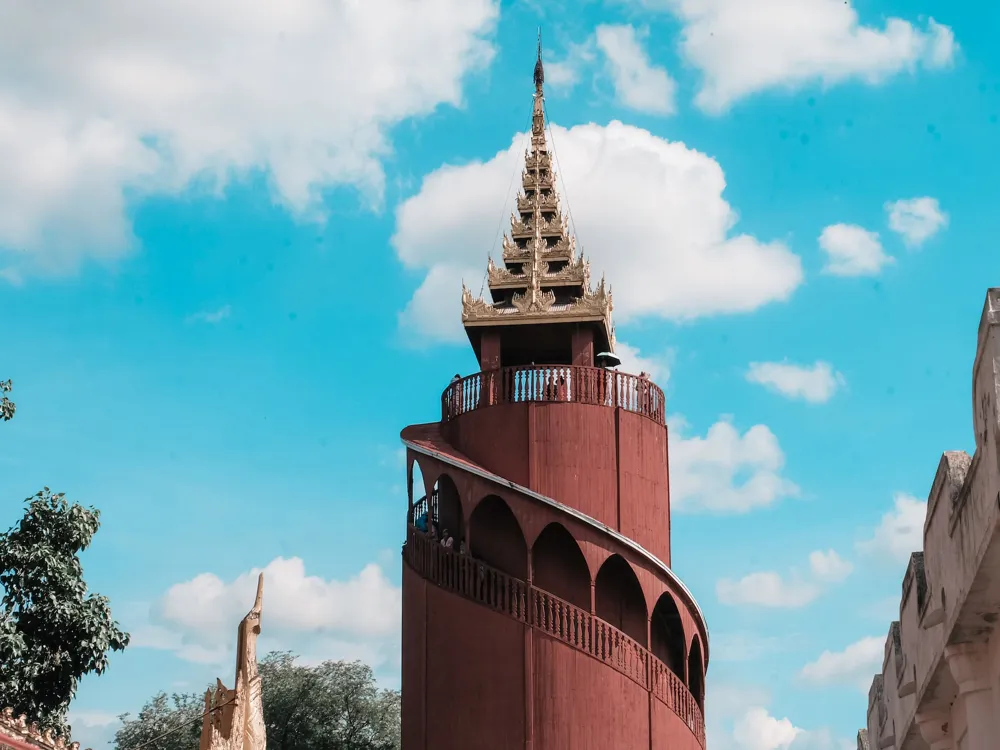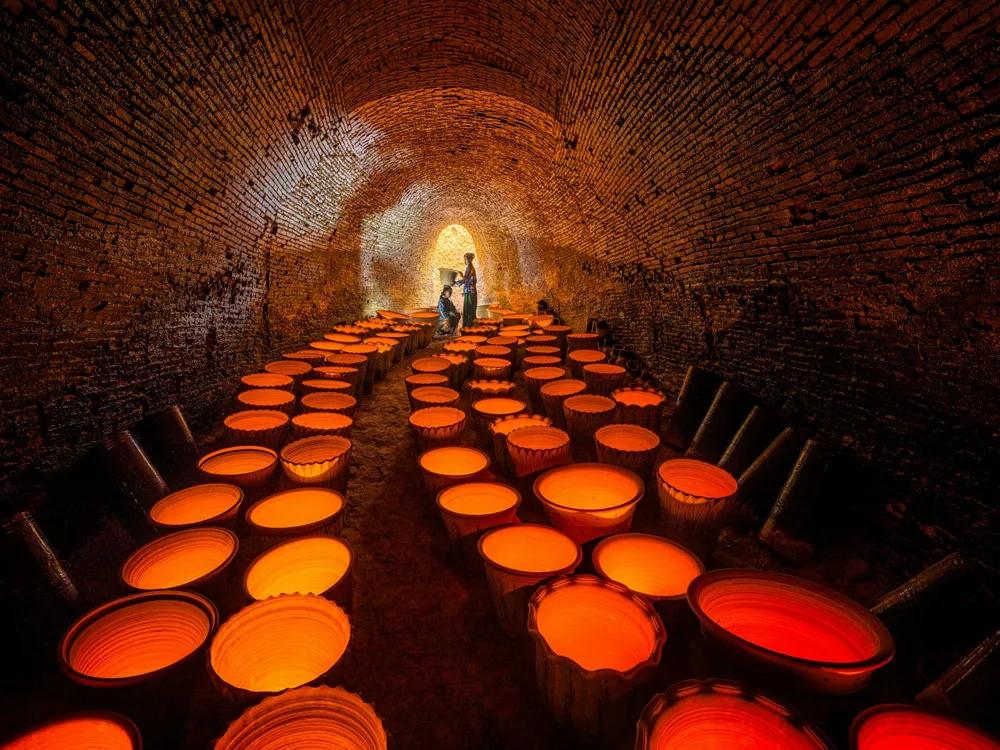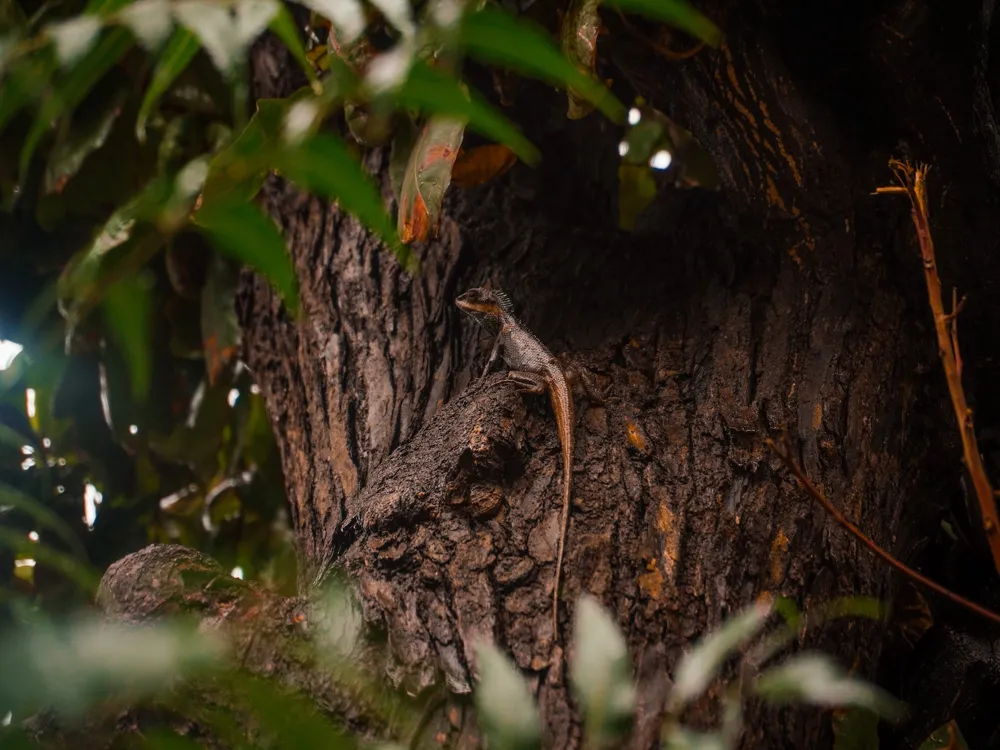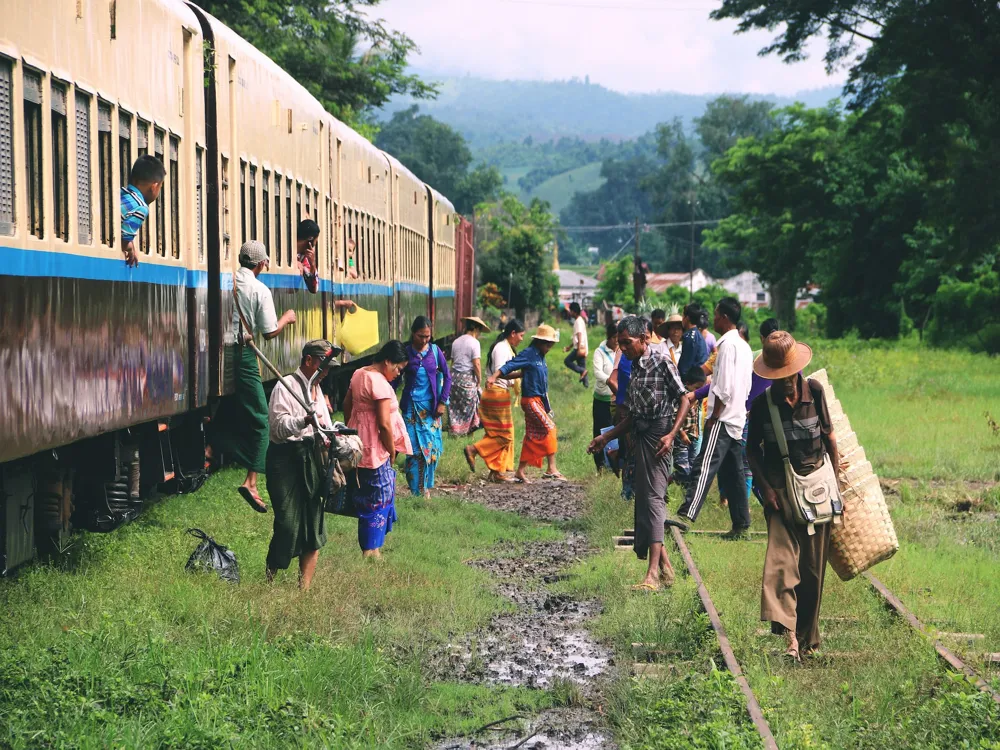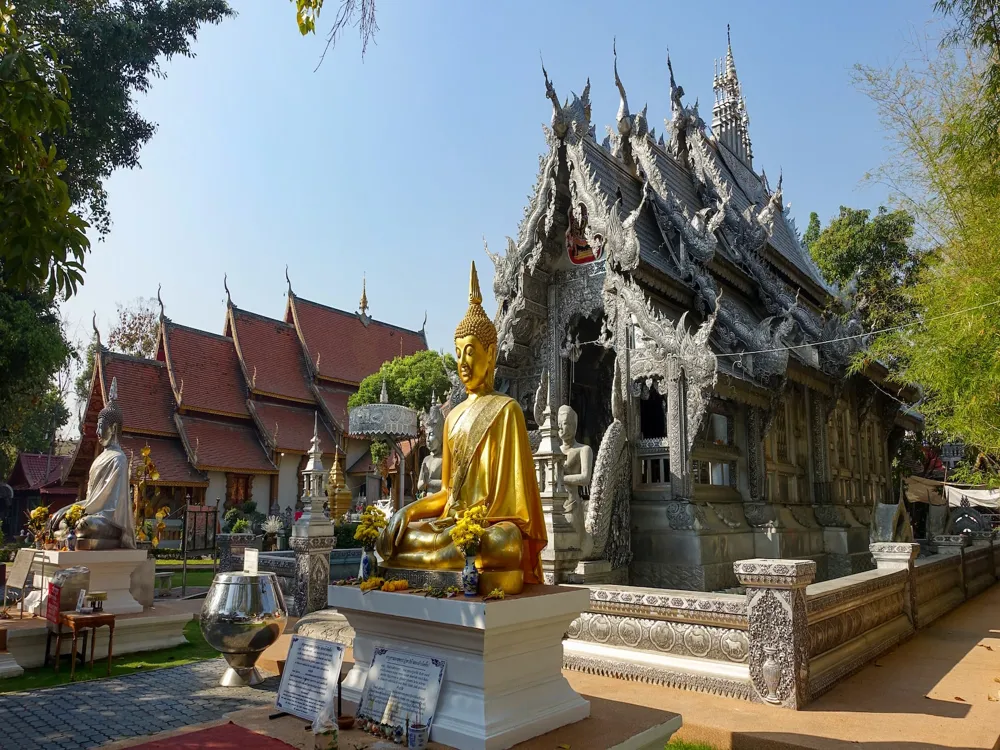Nestled in the heart of the ancient city of Bagan, Myanmar, the Ananda Temple stands as a testament to the architectural ingenuity and spiritual profundity of the 12th century. Known as the 'Westminster Abbey of Burma', the temple was constructed in 1105 AD by King Kyanzittha of the Pagan Dynasty. It's a fusion of Mon and Indian architecture, representing the pinnacle of Burmese temple design. The name 'Ananda' is derived from the Pali language, meaning 'boundless joy' and the temple indeed radiates an aura of serenity and bliss. The temple layout is in the shape of a perfect Greek cross with four standing Buddhas, each facing a cardinal direction. These statues are not only religious icons but also marvels of craftsmanship and art. The Ananda Temple is adorned with intricate carvings, glazed sandstone decorations, and impressive frescoes that narrate the life and enlightenment of Buddha. Over the centuries, the temple has survived earthquakes and invasions, yet it remains an enduring symbol of Bagan’s cultural heritage. Architectural Wonders of Ananda Temple The architectural brilliance of Ananda Temple lies in its harmonious blend of Mon and Indian influences, creating a unique style that set the precedent for subsequent Burmese temple designs. Its structure is a symmetrical masterpiece, featuring a central square with two stories. The temple's sikhara, or spire, is visible from miles away, towering over the Bagan plains with its gilded hti (umbrella-like topper), signifying the essence of Burmese religious architecture. The interior of the temple is equally mesmerizing. The corridors are lined with exquisite terracotta tiles illustrating scenes from the Jataka tales - stories of the Buddha's previous lives. These tiles are a crucial element in understanding the Buddhist narratives and Burmese culture. Additionally, the temple's four standing Buddhas, each over 9 meters high, are carved from teak wood and coated with gold leaf, representing different characteristics of Buddha: Kassapa (south), Kakusandha (north), Konagamana (east), and Gautama (west). The ideal time to visit Ananda Temple is between November and February when the weather is cooler and more comfortable for exploration. Additionally, the annual Ananda Pagoda Festival, usually in January, is a fantastic time to experience the temple in its full cultural and religious vibrancy. Visitors should dress modestly, covering shoulders and knees, as a sign of respect in this sacred place. It's also customary to remove shoes and socks before entering the temple premises. For photography enthusiasts, early morning and late afternoon offer the best light for capturing the temple’s beauty. Be mindful of not using flash inside the temple as it can damage the ancient frescoes. Ananda Temple is easily accessible from the town of Bagan. Visitors can opt for various modes of transportation such as renting a bicycle, e-bike, or a car. For a more authentic experience, horse-drawn carts are also available. The temple is approximately 10 km from the Nyaung U Airport, making it convenient for travelers flying into Bagan. Read More:Ananda Temple of Bagan: A Timeless Marvel
Visiting Ananda Temple: Essential Tips
Best Time to Visit
Dress Code and Etiquette
Photography Tips
Reaching the Ananda Temple: A Guide
Ananda Temple
Bagan
NaN onwards
View bagan Packages
Weather :
Tags : Temple
Opening hours : 7:00 AM - 6:00 PM
Ticket details : Free entry
Planning a Trip? Ask Your Question
Bagan Travel Packages
View All Packages For Bagan
Top Hotel Collections for Bagan

Private Pool

Luxury Hotels

5-Star Hotels

Pet Friendly
Top Hotels Near Bagan
Other Top Ranking Places In Bagan
View All Places To Visit In bagan
View bagan Packages
Weather :
Tags : Temple
Opening hours : 7:00 AM - 6:00 PM
Ticket details : Free entry
Planning a Trip? Ask Your Question
Bagan Travel Packages
View All Packages For Bagan
Top Hotel Collections for Bagan

Private Pool

Luxury Hotels

5-Star Hotels

Pet Friendly













